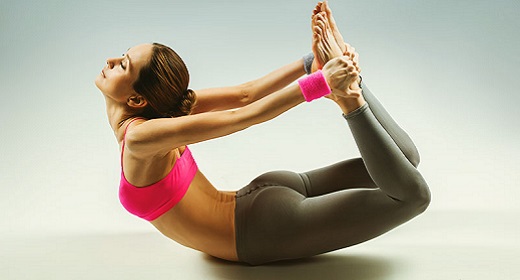Jivamukti yoga is one of the most intense forms of yoga which was given birth to by David Life and Sharon Gannon in the year 1984. This form of yoga is a physical, spiritual, and ethical practice that combines vigorous other yoga exercises with the support of five central tenets.
For physical, spiritual, and psychological growth, these five principles come together with Hatha yoga. So it is quite obvious to experience an overall transformation in your behavior as well as the attitude by mastering this technique of Hatha yoga.
Topmost Benefits Of Doing Jivamukti Yoga
- One of the most important things Jivamukti yoga teaches you is to be vegan. And since this form of yoga teaches you to respect all living beings, you develop more awareness of creatures as well as nature.
- Practicing Jivamukti yoga daily helps in the strengthening of internal organs and the removal of toxic elements.
- Apart from strengthening your muscles and stimulating your internal organs, Jivamukti yoga also increases your blood circulation.
- This form of yoga is perfect for athletes as it enhances body flexibility, improves body balance, and helps in getting rid of mental stress.
- If practiced daily, the chants and musical notes involved in Jivamukti yoga gets you closer to self-realization and spiritual enlightenment.
Yoga Poses Of Jivamukti Yoga
- Monkey Pose [Hanumanasana]Hanumanasana is one of the most popular Jivamukti yoga poses. This pose is named after Hanuman, a god figure in Hindu mythology. This pose is known to increase your flexibility as this position involves doing a split with your arms raised towards the ceiling at the end.
- Dancing Shiva Pose [Natrajasana]The second pose that comes under the sequence of practicing Jivamukti yoga poses is Natrajasana. This pose is also known as the King Dancer pose which is one of those yoga poses that test your focus, concentration, and balance. It enhances your ability to balance and hold all your body weight on one leg.
- Bow Pose [Dhanurasana]This yoga poses is the third in line. The bow pose is practiced in various styles and different yoga classes as it effectively and simultaneously works on different parts of your body muscles, including arms, legs, core, and glutes. All this pose requires is for you to lie face down on your yoga mat while lifting your legs and chest off the floor with both your arms stretched out behind you and hands holding onto your ankles to hold the legs up in the shape of a bow.
- Peacock Pose [Mayurasana]Mayurasana is one of the most advanced yoga poses that come under Jivamukti yoga. This one is usually taught in a 500-hour yoga teacher training program due to its intensity. This pose involves having your body lifted off the ground and balanced only with the help of your hands. The most appropriate way to perform the Peacock pose is by keeping your body in a straight line while it is being lifted in the air.
- Hero Pose [Virasana]The last and the fifth pose of Jivamukti yoga is Virasana. Virasana is a good starting point for breathing exercises and meditation. This pose is the easiest and most simple yoga Jivamukti yoga poses and is effective in bringing relief to dead tired legs. To do this pose, all you have to do is sit on the yoga mat with your hips pressed against your feet and breathe deeply.
Wrapping Up
Jivamukti yoga is about opening yourself to you and not just the world. In case you find practicing this form of yoga difficult in the beginning, take a break for a minute and remind yourself that this practice will eventually give you a focus on balance.
As you continue with your practice of Jivamukti yoga, you will slowly form a mindset that will help you in understanding the deeper immersion in a cultivated lifestyle that involves calmness, peace, and patience.
